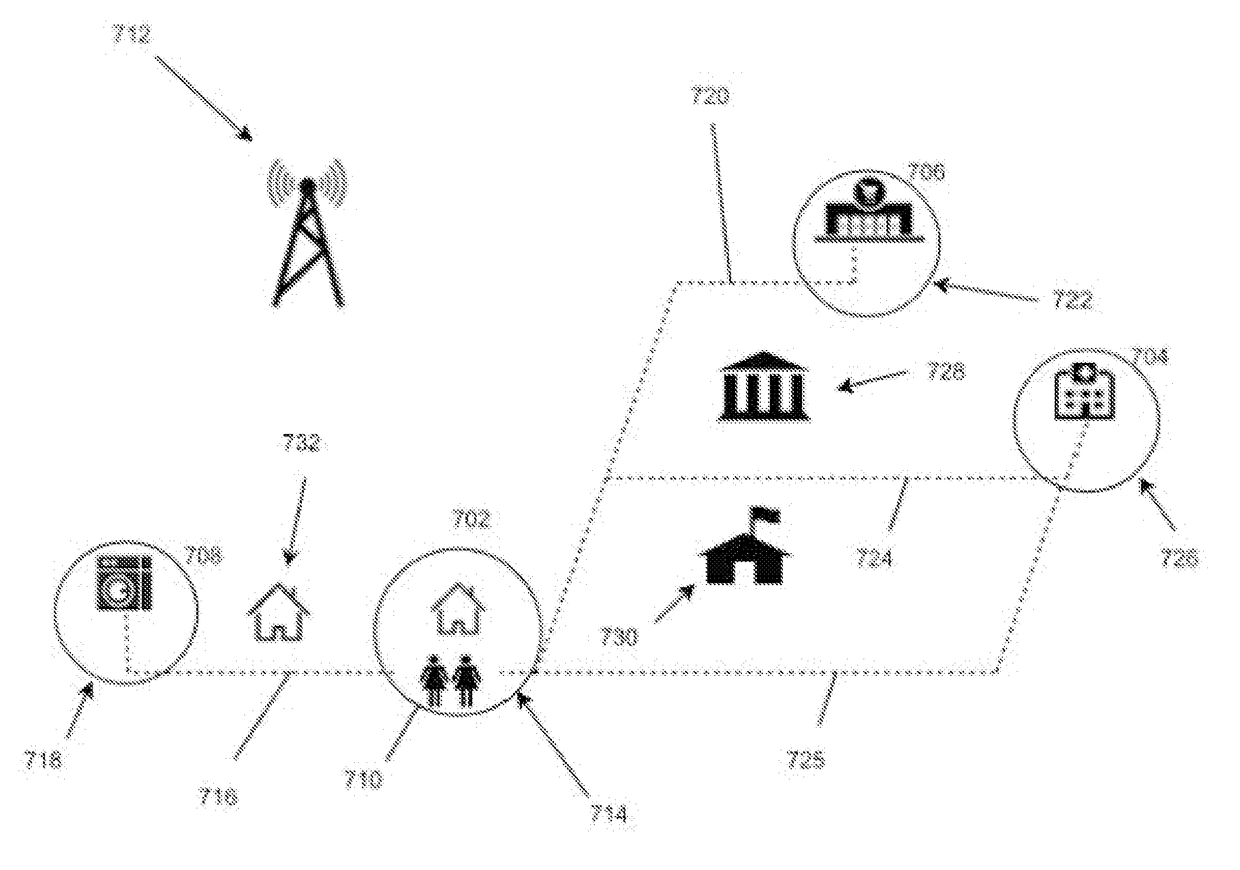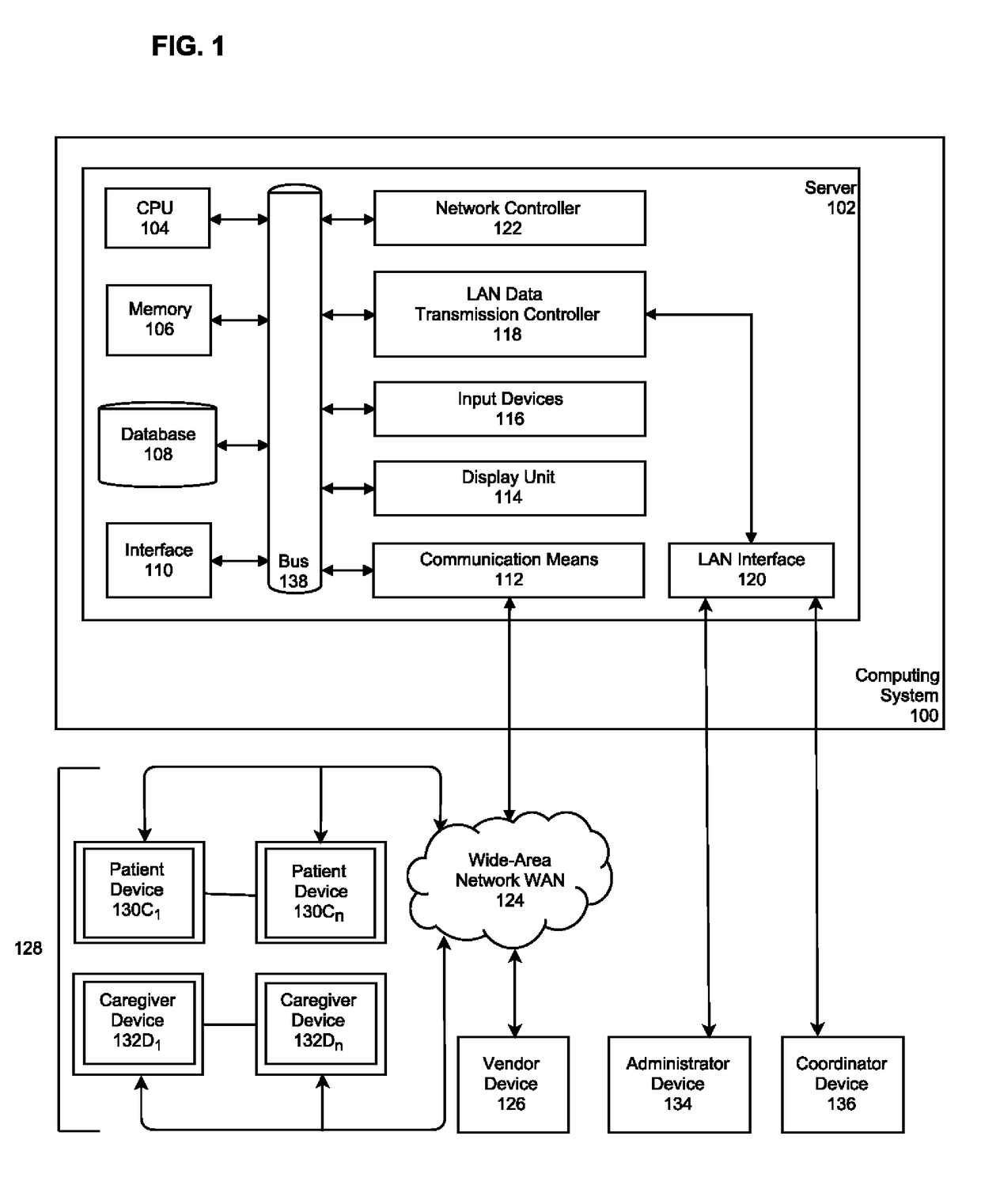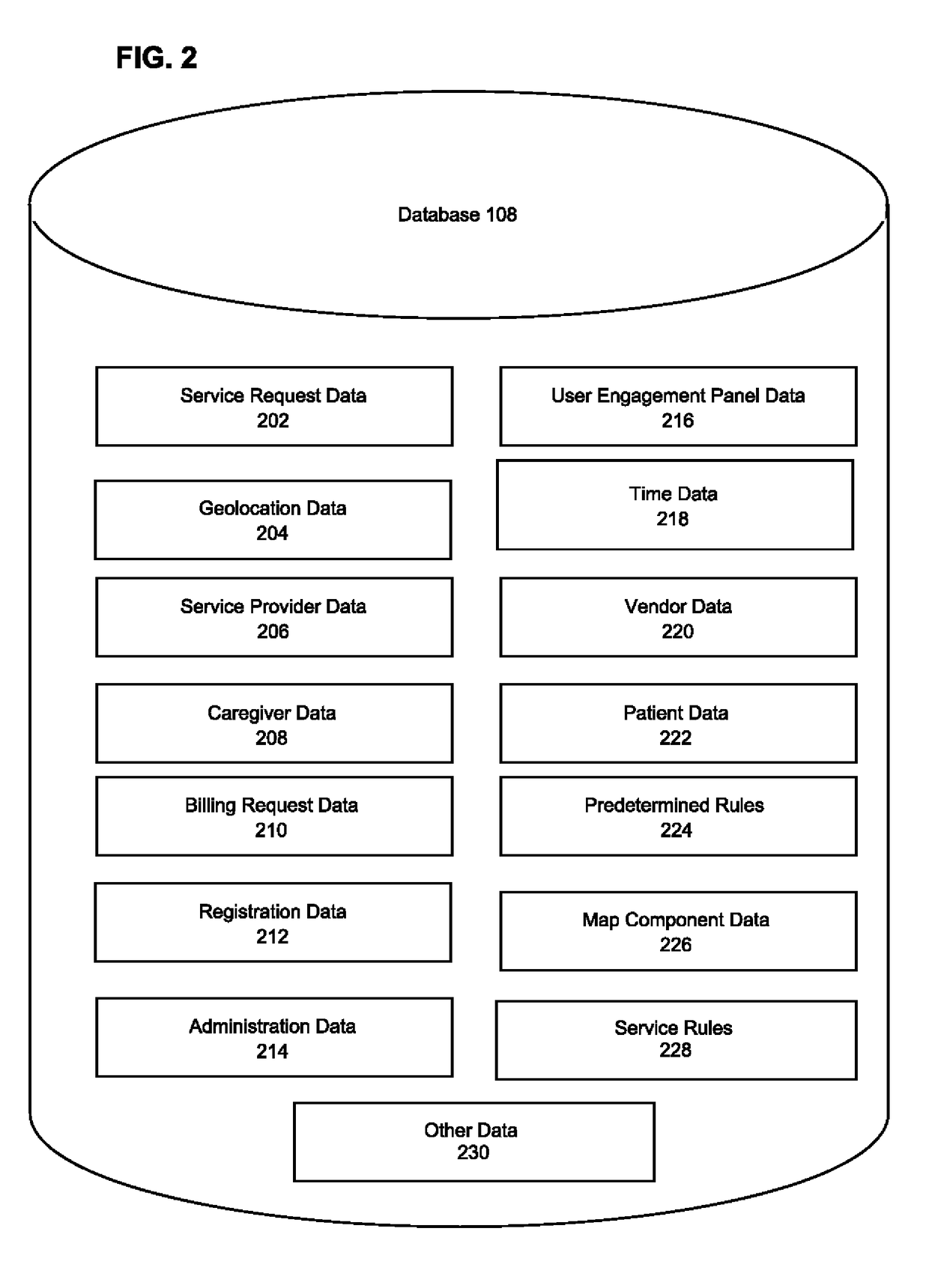System and method for healthcare billing verification
a billing verification and system technology, applied in the field of health care management systems, can solve the problems of increasing the difficulty of managing visits and billing information, affecting home health care costs, and affecting the quality of care, and achieve the effect of facilitating connectivity
- Summary
- Abstract
- Description
- Claims
- Application Information
AI Technical Summary
Benefits of technology
Problems solved by technology
Method used
Image
Examples
Embodiment Construction
[0047]Detailed illustrative embodiments of the inventive disclosure are disclosed herein. Specific exemplary embodiments that may be practiced are shown by way of illustration and explanation. The present disclosure is not intended to be limited to the specific terminology selected, and it will be understood that each specific element includes all technical equivalents which operate in a similar manner. However, techniques, methods, systems, and operating structures in accordance with the inventive disclosure may be embodied in a wide variety of forms and modes, some of which may be quite different from those in the disclosed embodiment. Consequently, the specific structural, functional and step-by-step details disclosed herein are merely representative, yet in that regard, are deemed to afford the best embodiment for purposes of disclosure, and to provide a basis for the claims herein which define the scope of the inventive disclosure. The embodiments herein are described in suffic...
PUM
 Login to View More
Login to View More Abstract
Description
Claims
Application Information
 Login to View More
Login to View More - R&D
- Intellectual Property
- Life Sciences
- Materials
- Tech Scout
- Unparalleled Data Quality
- Higher Quality Content
- 60% Fewer Hallucinations
Browse by: Latest US Patents, China's latest patents, Technical Efficacy Thesaurus, Application Domain, Technology Topic, Popular Technical Reports.
© 2025 PatSnap. All rights reserved.Legal|Privacy policy|Modern Slavery Act Transparency Statement|Sitemap|About US| Contact US: help@patsnap.com



